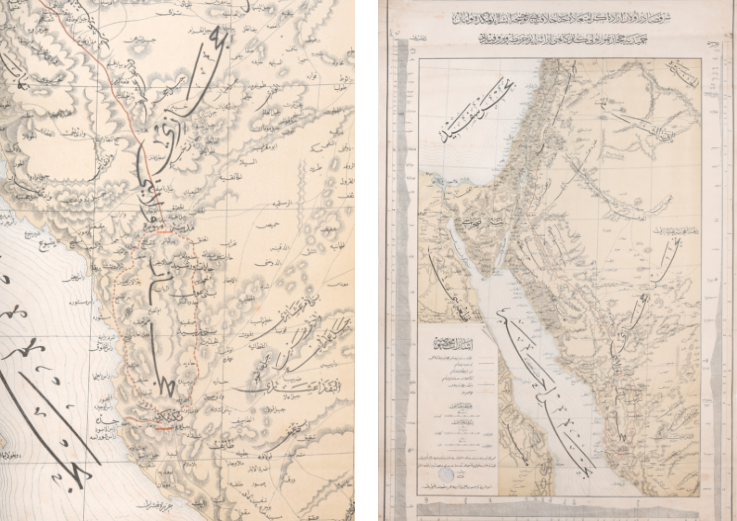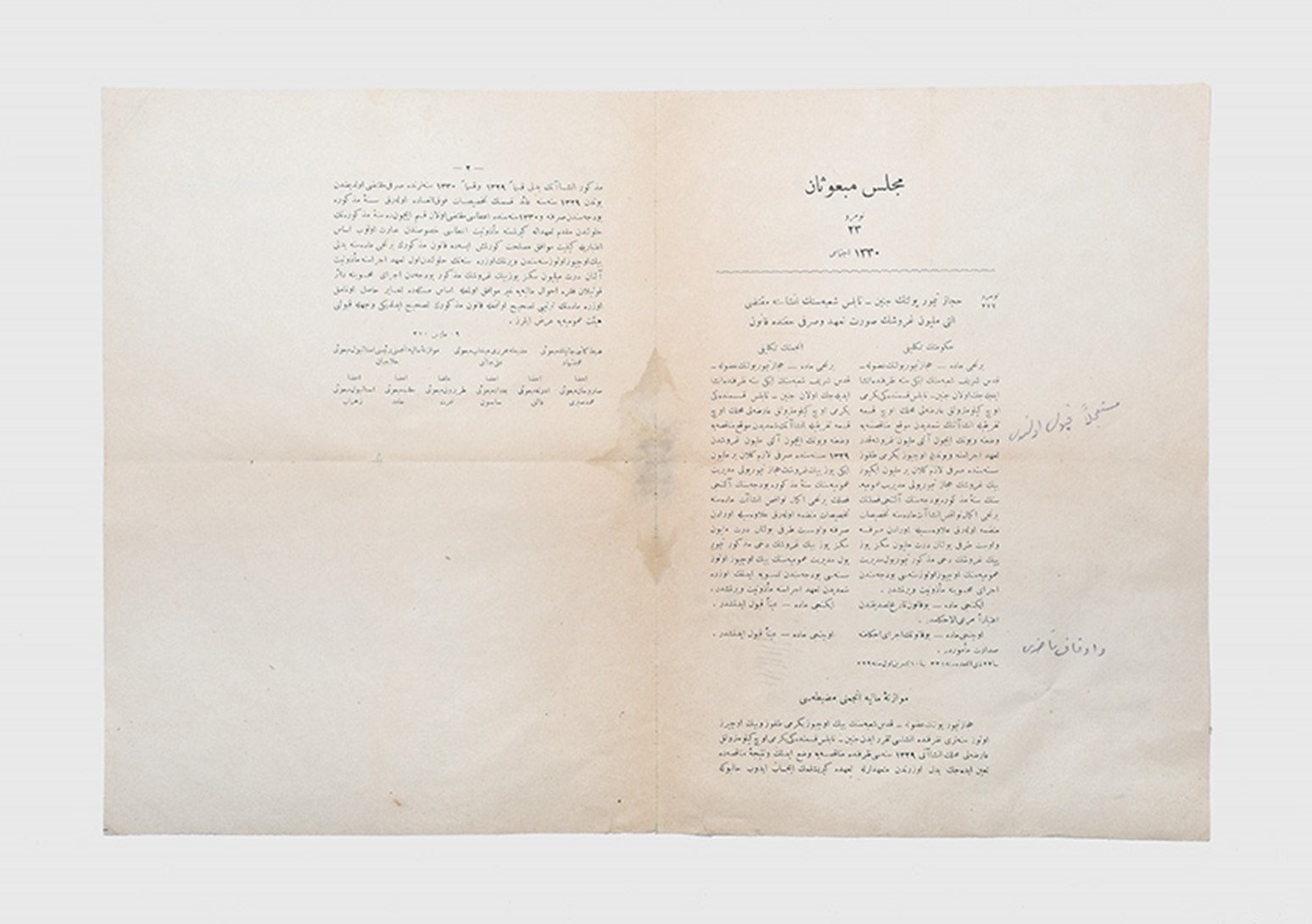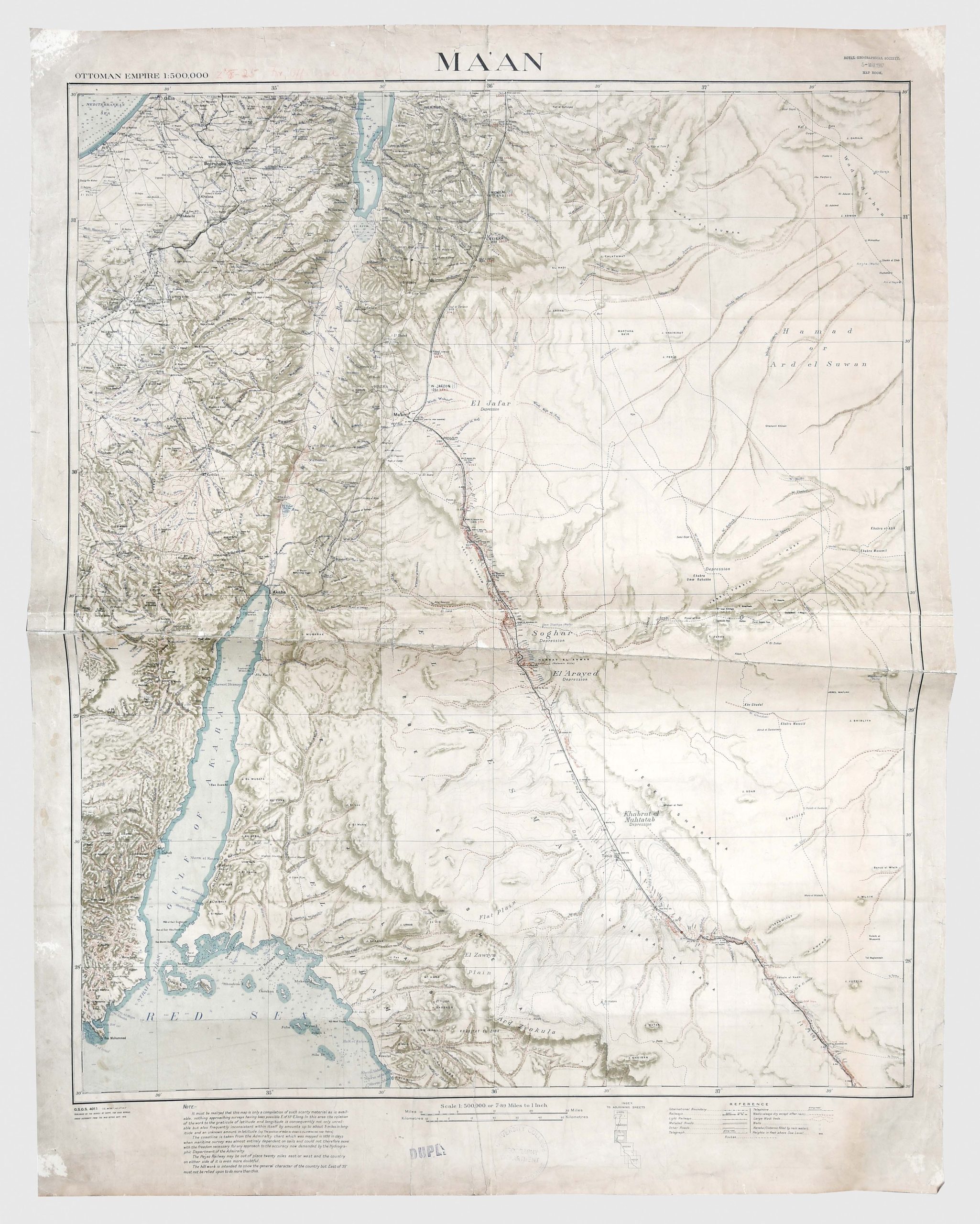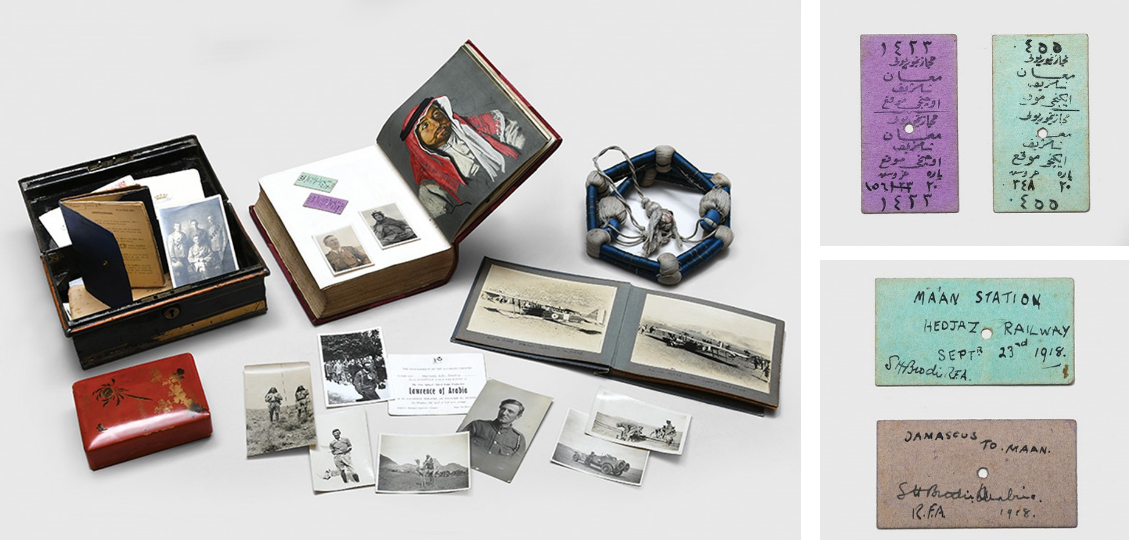The Hejaz Railway, the lifeline of the Ottoman Empire in Arabia and a strategic target of the Arab Revolt, began to be constructed by imperial decree in 1900, at the behest of Sultan Abdülhamid II (r. 1876-1909). It was an astounding feat of engineering which demonstrated to the world the Ottoman programme of modernization and ushered in a new era of communication. Extending 1,300 km across vast tracts of inhospitable desert towards the two holy cities of Mecca and Medina, the railway simplified travel between Damascus and the heart of Arabia, replacing arduous journeys by caravan with swift and comfortable transportation. From 1908, when the line reached Medina, it allowed hundreds of thousands of Muslim pilgrims to make the hajj to Mecca in safety and with relative ease. It also supported Abdülhamid’s project of Pan-Islamism, allowing Ottoman troops to stream into Arabia and increase the empire’s influence in the region.

Breaking Ground
The central line from Damascus to Medina largely followed the old caravan route. Its course was surveyed in 1900 by the veteran military engineer Hajji Mukhtar Bey, who conducted expeditions in east Africa in the late nineteenth century. This rare and important official map from 1903 is based on a manuscript drafted by two Ottoman cavalry officers, Captain Umar Zaki and Lieutenant Hasan Mu‘ayyin, under Hajji Mukhtar Bey’s supervision. The map covers the entire region, from just north of Hama, Syria, all the way south to Mecca. It provides a rare perspective on the railway’s embryonic development, clearly delineating those parts that had already been built in 1903 and those under construction, and each station is labelled. Additionally, it depicts the two alternative routes proposed for extending the line to Mecca and traces the suggested (but unrealized) route of a rail line from Mecca to the port of Jeddah.

Early Accounts of the Route
On 1 September 1904, Abdülhamid arranged a splendid inauguration ceremony to celebrate the laying of the track between Damascus and the town of Ma’an (now in Jordan). Many Ottoman dignitaries attended, and journalists from around the world were invited to document the empire’s great engineering achievement. Among the attendees was Eduard Mygind, a roving reporter for the Berlin Tageblatt, who had been based in Istanbul for some years. Mygind later published an account of the railway entitled Vom Bosporus zum Sinai (From the Bosphorus to the Sinai), a wry narrative which relates his preparations in Istanbul and journey to Damascus, before describing the technological achievements involved in the construction of the railway. Mygind also highlights the importance of the Hejaz Railway to pan-Islamic unification, concluding by emphasizing the significance of German expertise in its construction and praising Abdülhamid II as the driving force behind the project.

Changing Priorities: The First World War
After the deposition of Abdülhamid and the sudden loss of the empire’s North African and European territories, the Hejaz Railway acquired an even greater significance in holding the remaining Ottoman territory together. The strategic demands of the First World War encouraged the Ottoman state to build branch lines, particularly in the direction of the Suez Canal, which was under British control. This rare decree by the Ottoman Chamber of Deputies, written in the opening months of the First World War, vividly demonstrates Ottoman military preparations in action. It outlines the state’s commitment to constructing a 23-kilometre railway connection between the towns of Jenin and Nablus in what is today the West Bank, as an extension of the Jerusalem branch of the railway. The railroad was a key piece of infrastructure in supplying Ottoman troops in the Sinai, hence the decision of the Ottoman government to spend large amounts of money on its expansion as the war began.

The Arab Revolt
On 10 June 1916, the Arab Revolt against Ottoman authority was launched at Mecca. The Hejaz Railway immediately became an important target for the Arab forces: if the principal Ottoman supply line could be disrupted, the Arab bid for independence would have a far greater chance of success. While T.E. Lawrence fought alongside the Arab forces on the ground, British officers at the Arab Bureau in Cairo, the famed military intelligence unit of which Lawrence was a part, closely followed the course of the Revolt. This exceedingly rare and important map of January 1917 was produced by the bureau and focuses on northern Arabia, which became the epicentre of the revolt in the months immediately following publication. The locations depicted include Aqaba, which fell to Arab forces in July 1917 with the assistance of Lawrence, and the Hejaz Railway, which was targeted in Arab-British raids at al-Akhdar and Mudawwara. This map would have been hurriedly produced in a very limited print run. It was almost certainly the most accurate map of this critical theatre available to the British high command at a vital moment in the campaign.

Lawrence’s Involvement with the Railway
Lawrence’s famed assault on the railway is described in detail in his Seven Pillars of Wisdom. This outstanding exemplar of his “big book” was presented by Lawrence to his “imperturbable” brother-in-arms, Lieutenant Samuel H. Brodie, and is accompanied by a collection of photographs which draw us into the world of front-line service on the Hejaz Railway. This copy is inscribed on a preliminary blank in the hand of Brodie’s mother “Samuel H. Brodie from Colonel T. E. Lawrence, December 1926”, and is one of 32 incomplete subscribers’ copies (from a total edition of 211) intentionally issued in this way under Lawrence’s instructions.
The core of the accompanying collection consists of over 150 original photographs, loose and in albums. Highlights include wonderfully evocative images of Brodie’s unit in the field, including Brodie himself, his second-in-command George Pascoe, and attacks on strategically important stations along the Hejaz Railway. Images illustrate the 8 August 1918 attack at Mudawwara, a key station south of the heavily fortified Ottoman stronghold at Ma’an. Brodie’s snapshots show the destroyed station from different positions, including images of shattered buildings and a shot of the explosion that destroyed the well.

Hejaz comes to Hollywood
Finally, perhaps the most famous representation of the Hejaz Railway appears in David Lean’s classic film of 1962, Lawrence of Arabia. The centrepiece of this insightful archive is a gift given to the film’s star, Peter O’Toole, shortly before the film’s premier, by his wife Sian Phillips and his close friend, the Welsh actor Kenneth Griffith. The gift consists of an unpublished Lawrence letter and a postcard, framed as a piece, intended to help O’Toole through two anxious months of post-production, providing the actor with a tangible link to the man whom he portrayed so memorably on screen.





